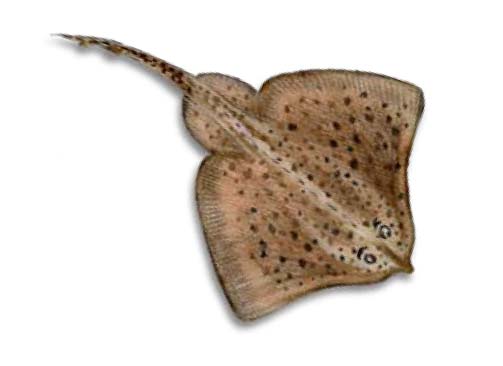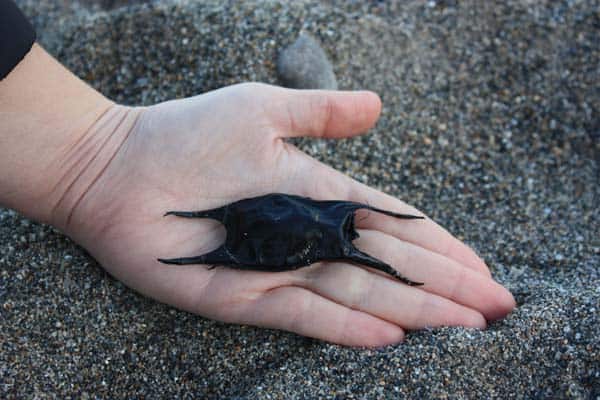
Spotted Ray, Raja montagui. Artwork: Sinead Begley
Fast Facts
Scientific Name: Raja montagui
Gaelic Name: Roc breac
Conservation status: Listed as Least Concern by the IUCN.
Range: Widespread in the inshore waters and shallow shelf seas of
the north east Atlantic, and in the Mediterranean.
Habitat: Occurs at depths of up to 283m, although most commonly found inshore in sandy areas.
Lifespan: Up to 18 years.
Reproduction: Adults start reproducing at about 3 or 4 years of age and females lay between 25-60 eggs.
Diet: Fish and crustaceans.
Predators: Seals, humans.
Spotted Ray eggs can be easily confused with the larger Undulate Ray species as they are similar in shape and form.

This eggcase has no lateral keels or distal field, and the bottom horns curl upwards giving the purse a bobsleigh shape.
If you find one of these purses on the beach, please do report it to your local shark and ray sightings scheme.